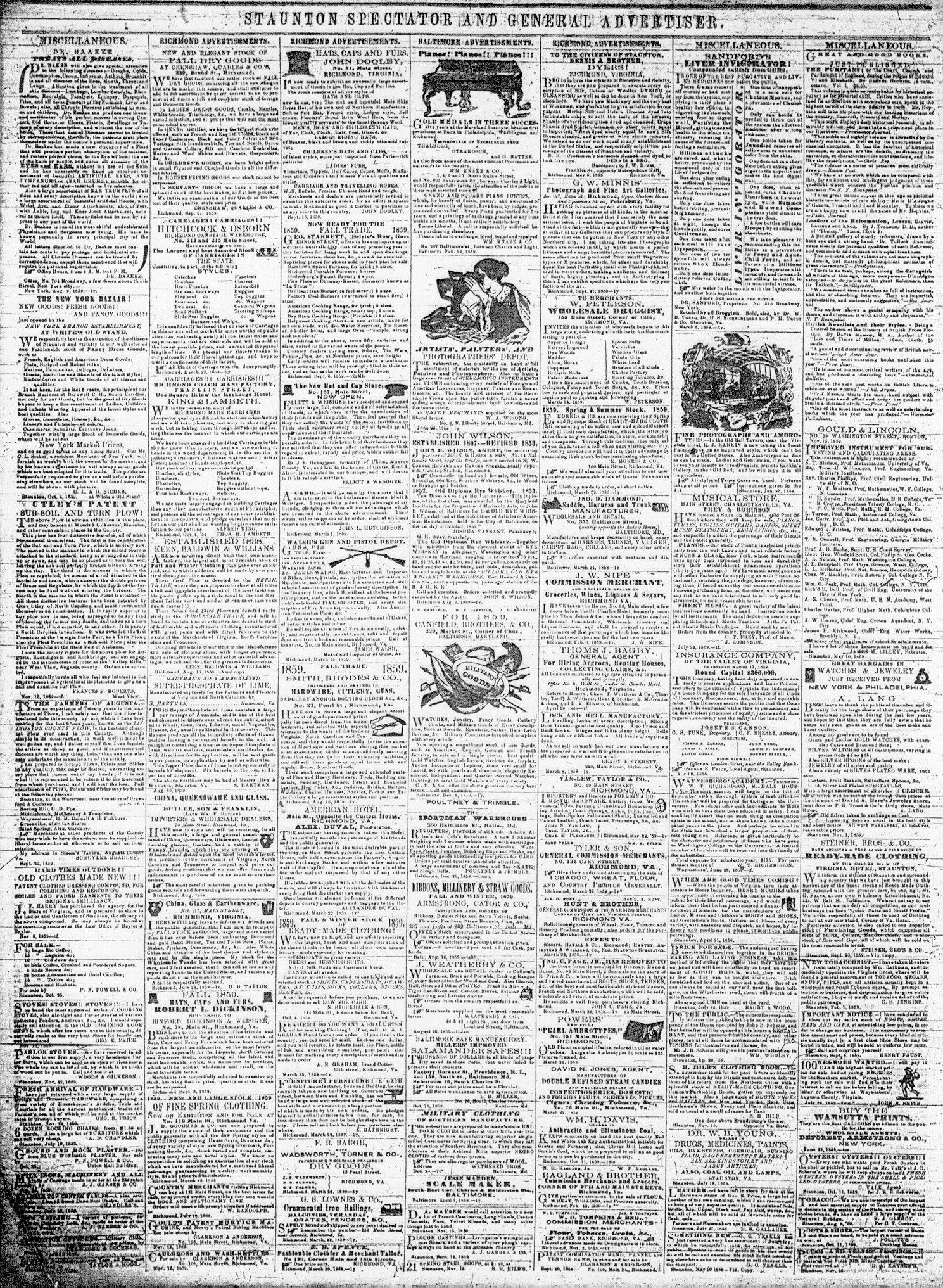|


Staunton Spectator: Jan. 31, 1860, Page 4

|

Staunton Spectator: Jan. 31, 1860, Page 4
|
|||||||
|
Page 4 was always composed entirely of advertisements. Especially toward column heads, these ads were generally larger than those appearing elsewhere in the paper. In addition, these ads tended to appear for extended periods of time. Graphically, page 4 was by far the most interesting, with some ads having very visible illustrations and/or large and unusual typefaces. The size of these ads, their long-term appearance, and their graphic distinctiveness all seem to suggest the wealth of these advertisers relative to those small businesses that placed short and briefly appearing ads elsewhere in the newspaper. |
 |
|
Columns 1, 6, and 7 were usually headed "Miscellaneous." Many of these "miscellaneous" ads were from local merchants trying to sell goods by prominently advertising them as being from large Northern metropolitan areas, such as James M. Lilley, who sold surveyor's instruments manufactured by Gould and Lincoln in Boston, and C. L. and D. Sicher, who invited citizens of Staunton to visit the clothing offered by the "New York Bazaar" recently opened at "White's Old Stand." Ads such as these suggest the means by which urban merchants penetrated small markets in distant locales, by using small business-owners as local agents for products sold nationwide. |
|
|
Columns 2-5 were headed "Richmond Advertisements" or "Baltimore Advertisements." These ads, like those of products originating in Boston or New York, further indicate the degree to which large urban producers reached out to smaller communities for markets. In addition, the connections particularly to Baltimore and Richmond suggest where citizens of Augusta County might travel if they left their towns to visit a city. Advertisers from New York, never thinking readers might actually travel such a distance on a regular basis, tended to tell readers where in Staunton they might purchase the product in question. Ads from Baltimore or Richmond, however, often invited readers to visit the advertiser's store for themselves. These entreaties were relatively new to Augusta County in 1860. The Virginia Central Railroad linked Augusta County to Richmond only in 1854, while turnpikes connected the county to the north and west long before then. Ironically, then, advertisements suggesting connections to New York and Boston were more familiar sights to Augusta residents than those related to Richmond. By 1860, however, Richmond had become the primary exchange point for the goods of Augusta County's farmers and consumers. Just as the railroads and telegraphs in the nineteenth century gave newspapers from small towns increased access to information, so too did those technologies make it increasingly feasible for individuals to buy consumer goods in the stores of merchants outside their home towns. |
 |